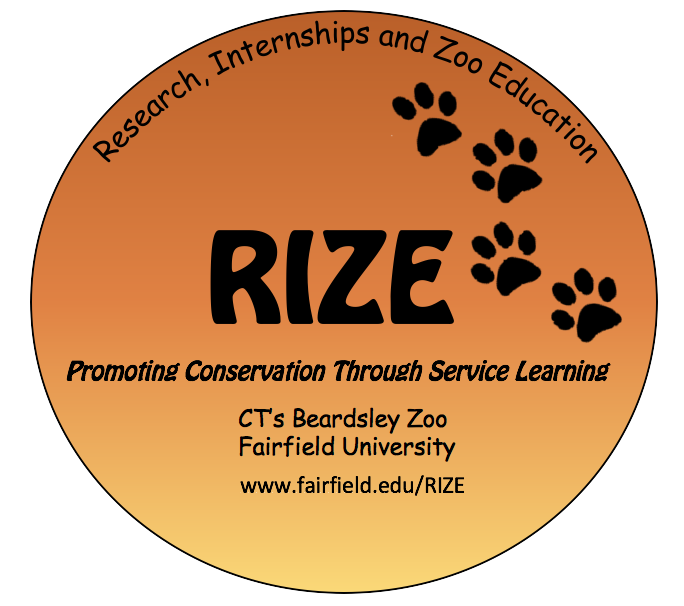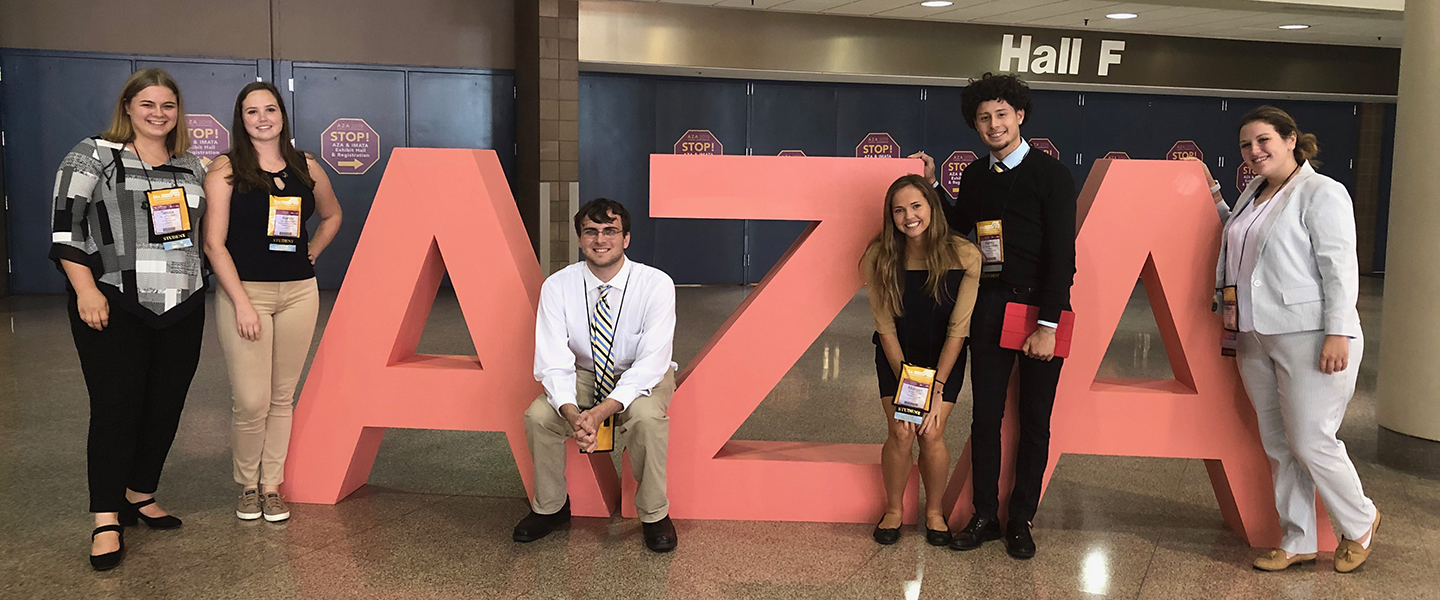On This Page
Our Philosophy
Service learning is an educational approach in which students apply academic knowledge and skills to address the goals and needs of disadvantaged communities. While service learning typically centers around human communities, we are of the opinion that many animal species currently represented in zoos around the world should also be defined as communities in need in that these species are experiencing exploitation and marginalization on a massive global scale.

What Is RIZE?
RIZE is service learning research program which began at the Connecticut’s Beardsley Zoo and Fairfield University. Unlike most research conducted by universities in zoos, RIZE projects are selected by zoo staff and based on zoo questions and needs. Because resources such as time and money are often limited in zoos, many questions regarding animal behavior are left unanswered and anecdotal observations by keepers left undocumented. RIZE students work for zoos in carrying out projects that the zoo considers important but yet undoable due to resource limitations. RIZE brings students, equipment and other necessary resources to the zoo to work on projects that range from behavioral monitoring to exhibit enrichment and can last anywhere from a single semester to several years in duration. RIZE is currently expanding to include students from other disciplines such the arts and communications.
Sample RIZE Projects
RIZE has worked on a number of different projects for the CT’s Beardsley Zoo. Projects were designed to specifically address zoo questions, needs and goals. Below are just a few of the projects carried out by RIZE.
"Why are we seeing increased aggression within our captive prairie dog colony?"
In 2015, staff at the CT’s Beardsley Zoo noticed increased levels of aggression in their captive prairie dog colony. Along with behavioral observations, RIZE students began mapping burrows and documenting underground connections using a combination of liquid fog and GPR (ground penetrating radar). Based on our data, we concluded that the colony had fractured into two separate coteries and that aggression was due to food access. Aggression was successfully minimized by placing separate sources of food within the range of each coterie.
"Why do small engine noises seem to bother our anteaters?"
In 2016, the CT’s Beardsley Zoo reported that their anteaters, especially the female, Pana, exhibited anxiety when exposed to sounds from lawn maintenance and construction equipment. While observing their behavior, a RIZE research student recorded a video of Pana responding to a visiting child’s loud trilling sound. Pana responded to the sound by bristling and emitting a loud roar. We began investigating sounds that were known to cause anxiety (the child’s trill, lawn maintenance and construction equipment, and the call of a baby anteater) and comparing them to sounds that do not seem to induce stress. Based on acoustic analyses of these sounds, we found striking similarities between the stress inducing sounds such as strong harmonic structure. Sounds that lacked such acoustic characteristics did not seem to cause anxiety. We hypothesize that sounds that cause stress are acoustically similar to that of a baby anteater, a sound female anteaters are likely to be particularly attuned to.
"Is our female wolf pregnant?"
Red wolves are part of the Species Survival Program (SSP). In February of 2014, zoo staff began to suspect that their female wolf might be pregnant due to certain behaviors she was exhibiting. We were asked to observe and further document her behavior. In addition to observations, we decided to assess whether there were any changes to female’s morphometrics that would be indicative of pregnancy (e.g. flattening of abdomen). To do this non-invasively, we examined photos of the female taken over several months with ImageJ, an open source image processing program. Based on our non-invasive analysis, we concluded that the female was pregnant. We were correct. The female gave birth later in the spring of 2014.
What have RIZE students accomplished at the Connecticut’s Beardsley Zoo since 2014?
- 18 posters presented at AZA meetings in Orlando, Salt Lake City, San Diego, Indianapolis, Seattle
- Over 2000 research service hours
- Over $30,000 in grant and scholarship money
- Media Coverage (e.g. AZA Connect Magazine, Connecticut Post Newspaper, Fairfield Now Magazine)
